
The work, “Free Passage”, is the first in the project, VOYAGE, which researches identity, migration, slow travel, sustainability and the sea, inspired by my parents’ immigration from Germany to Australia. The Queen Frederica pictured above is the ship they traveled on in 1967. That’s them standing on the bow.
The Pilot Project, Part 1 of VOYAGE was supported by a juried grant from Stiftung Kunstfonds (German Arts Council).
This blog describes a 2022 sea-crossing I completed as part of the research.
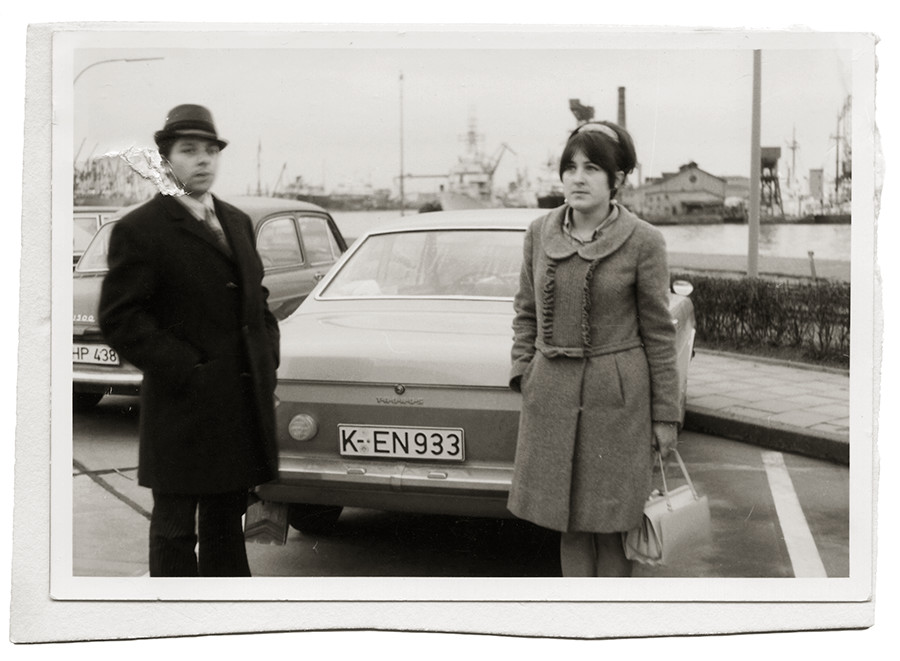
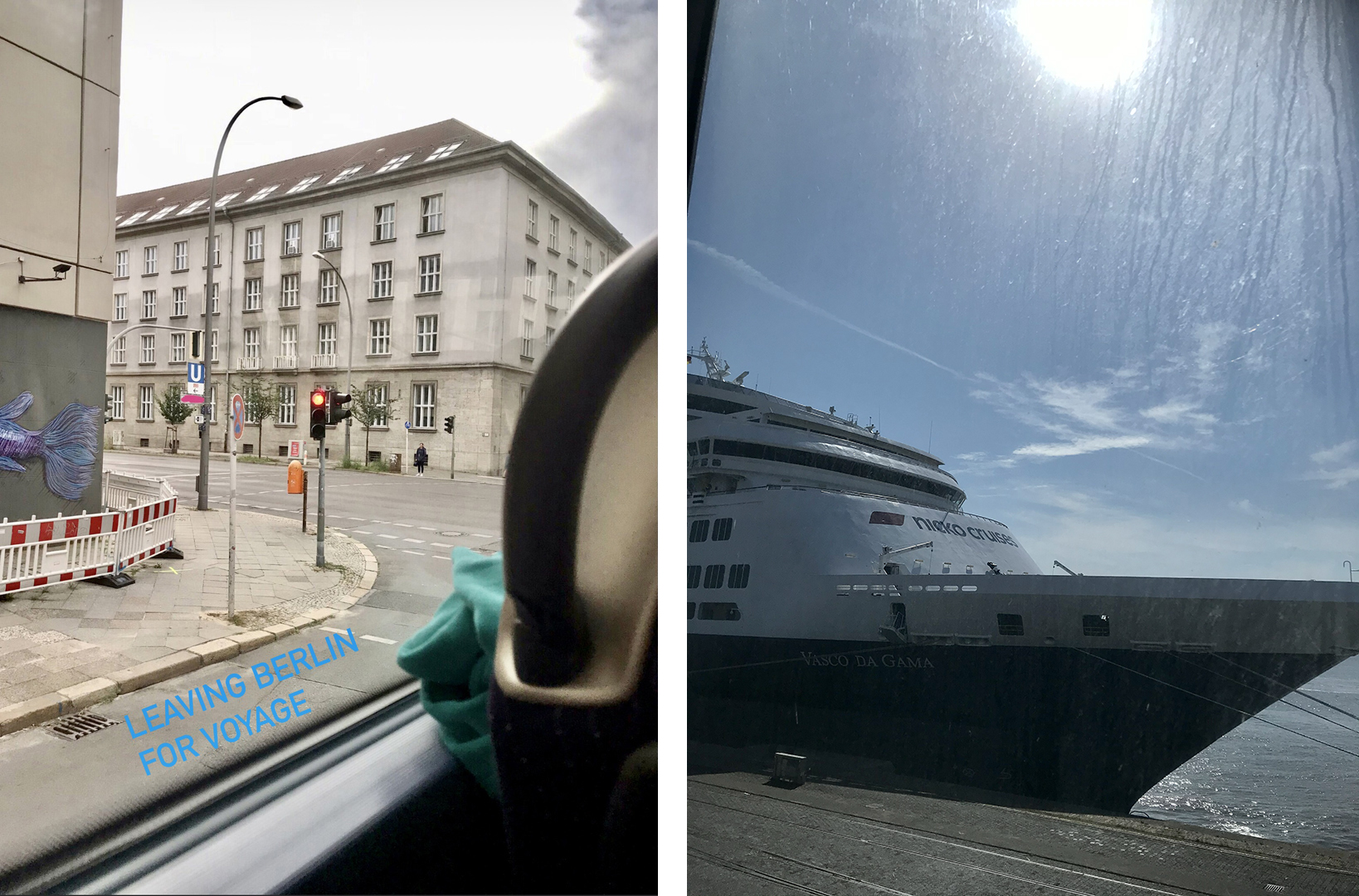
I leave Berlin early on August 23rd, 2022, for Bremerhaven (an auspicious date for those that know me and the number 23). Off on an exciting “mission”.
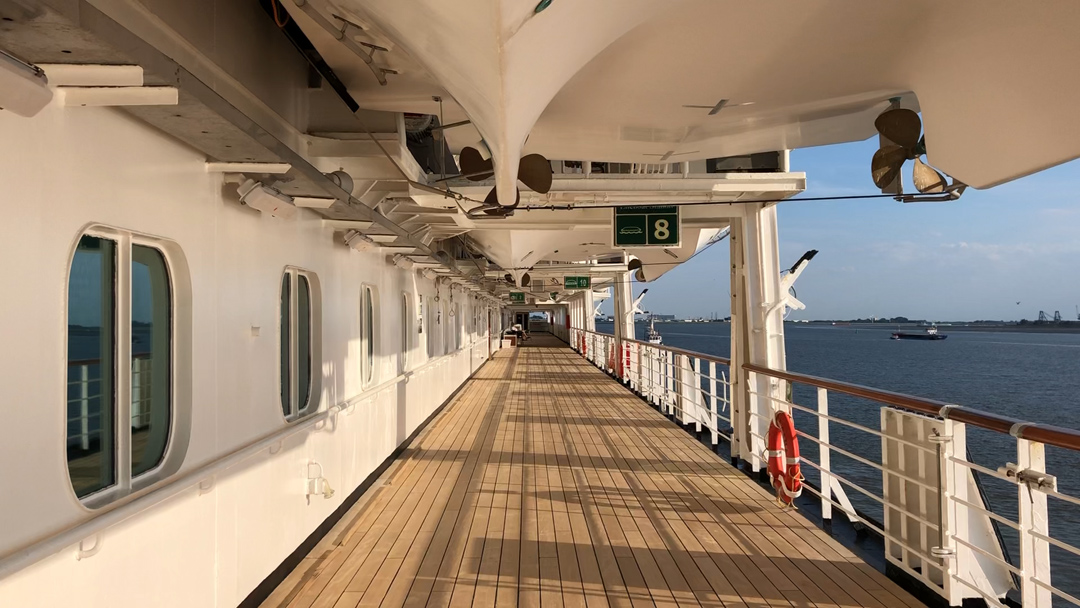
It’s a sun-drenched summer’s day as I watch the tug boats escorting us out of the impressive industrial harbour of Bremerhaven. All the while I think about my parents who left this port 55 years ago to go on a 2-year “work & travel” adventure to Australia. They had no idea that they’d stay for good…

And while we’re still in the port and wifi range, I receive an email from a collector in the US:
“Tasch! I love the idea of your new mysterious at-sea project and look forward to updates. But I had to write because we are currently shipping some of our art – including “Sewing calms me down” (above right) – which be ON THE HIGH SEAS AT THE SAME TIME AS YOU!
It seems like some kind of quantum entanglement.”
A beautiful entanglement! And so I make my way to my cabin to get into costume.
Ahoi/Ahoy!

Last night in Berlin, the group show Feel Free opened, which includes the artwork at the very top, “Free Passage” which pays homage to my parent’s immigration by sea, from Germany to Australia. I’d planned to trace their route from Bremerhaven to Melbourne earlier this year in a different way to their journey – on a working cargo ship. However, every company was closed to passengers till 2023. Indeed, Corona was still impacting.

And then this wonderful opportunity arose. I’m currently on a cruise ship for a curious “mission”, one that takes place in parallel universes, not unlike the bizarre worlds within worlds that I’m investigating. There is no wifi on board, a terrific opportunity to digitally detox and slow down.

While I won’t have time to partake in tonight’s “Evening Programme”, it’s fascinating to consider the different events, opening simultaneously in my reality:
• an invitation onboard for all singles to join the Captain at his table for dinner,
• the Feel Free exhibition opening @scottyspaceberlin in Berlin,
• and then the multiple roles I’m fulfilling here for the first week of this cruise.
Let alone the contemplations on slow travel (is hedonistic slow travel still slow travel?), the state of the oceans (where does our effluent go?) and my parent’s voyage 55 years ago.
So many questions. Art imitating life imitating art.
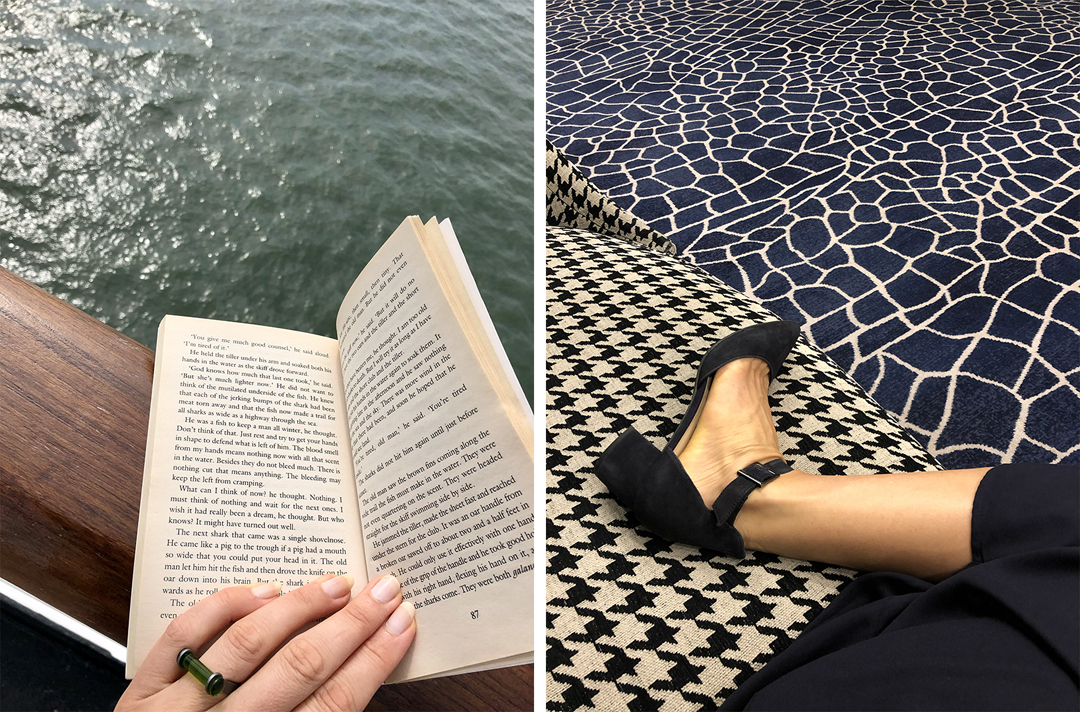
Apparently, we passed jellyfish swarms and a guest also saw a dolphin. Here, the workdays are long and I wasn’t near a window or on deck to see those natural wonders, which thankfully do stop us.
I revisit Hemingway’s, The Old Man and the Sea, essentially a tale of overcoming defeat. I’m reminded of “lockdown” in my beach idyll, in Australia, during Covid. I devoured literature again then (and not unlike Hemingway, drank a lot). Deep dives into other stories and my art practice helped soothe the draconian lockdown measures and confrontation with my isolation and “parallel” life (in Australia and Berlin). And alongside my incredible family and friends, what helped notably was the sea “herself” and my commitment to a daily, cold-water swimming practice, in a bikini, and in whatever weather and conditions nature presented.

There’s a bit of waiting around for this exciting parallel “mission” I’m on. I’m not complaining. The locations are surreally luxurious places to wait with food, drink, sunshine, friendliness and connections galore. A surreal, privileged bubble, floating on the seas.

My parents also lounged, played, dined, drank and connected with strangers on their 6-week adventure from Europe to Downunder. Mum recently said they were served delicious fare, which they’d never had before – an exquisite way to begin their “work and travel” adventure. And despite living in fabulous Köln, where Mum had just started a good job with prospects, the 60s Germany they were departing was still rather bleak.
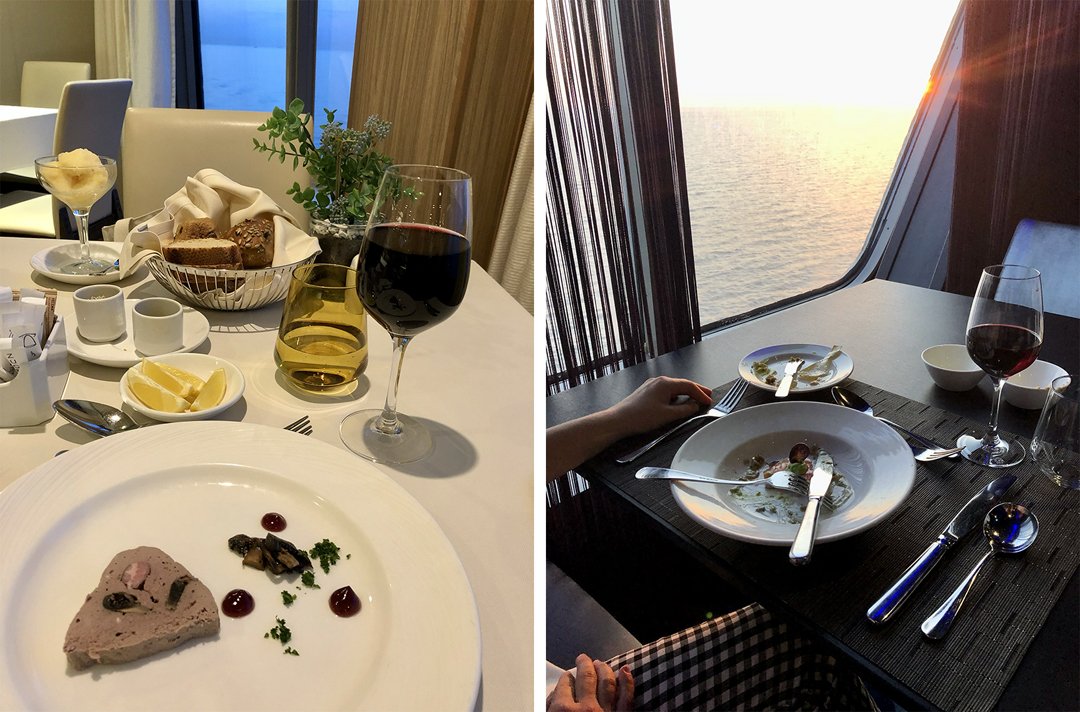
As relative newlyweds, love was their anchor, and Dad desperately wanted an adventure. Although they had also applied to Canada, the Aussie paperwork came through first and had some lucrative incentives. So perhaps “The Lucky Country” chose them? A country overflowing with work opportunities and sunshine. Mum at 20 and Dad at 27 years old, away on their romantic 6-week-long party on the seas and in cities along the way.

Unbeknownst to my parents, that 1967 voyage was to change the course of their lives. A teary Uncle Werner (alongside his siblings who’d come to farewell Manni and Gerdi) called out to my father, whose nickname was “Little Bear”, „Bärle! Bleib nicht zu lange! Komm bald wieder!“
And yet a new life was calling them in beyond the obligatory two years. Away! Away from families and loved ones in Köln and Füssen. Far away from the language and culture close to their heart. I can’t begin to imagine their excitement and trepidation.


Oh, and yes, that’s a drone at the window.

It’s a special time to be on the Vasco da Gama.
There are only 370 passengers on a 4-5 star vessel that usually takes 1200. The ship my parents travelled on, Queen Frederica, was also a “Hochsee Schiff” Cruise Liner, accommodating 1,179 passengers, and it was its last outbound journey. From 1968, the faster option by plane took precedence. Mum and Dad could have travelled by plane, but why deal with that hideous jetlag when you can sail and party?
“We don’t know anyone there, so why rush”?
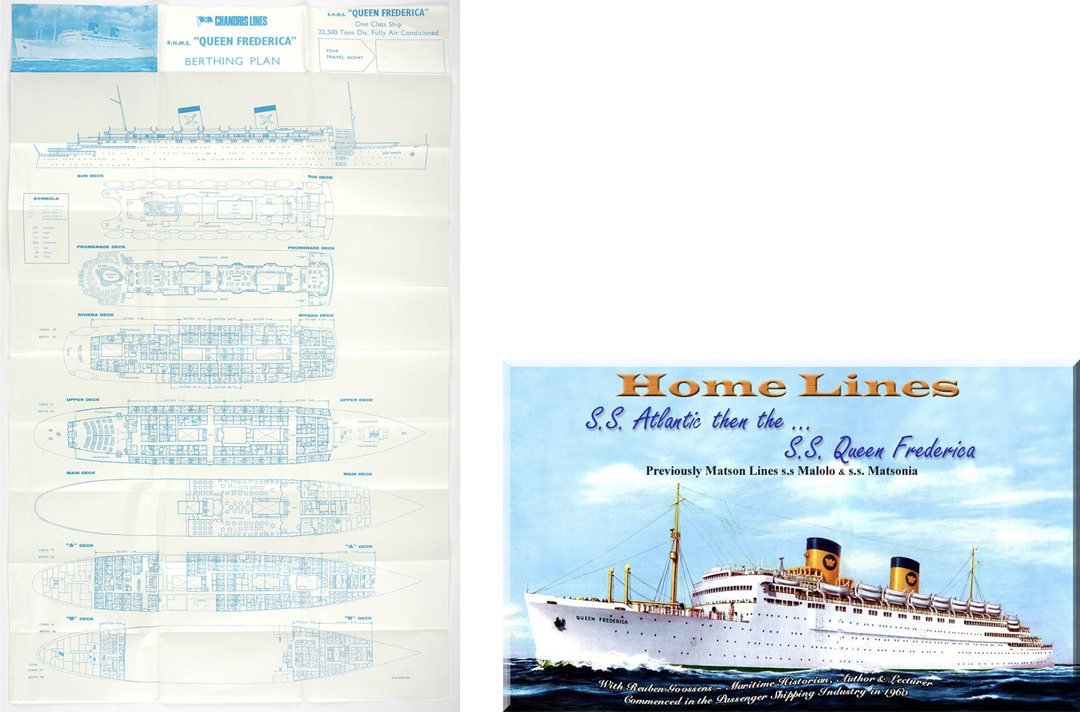
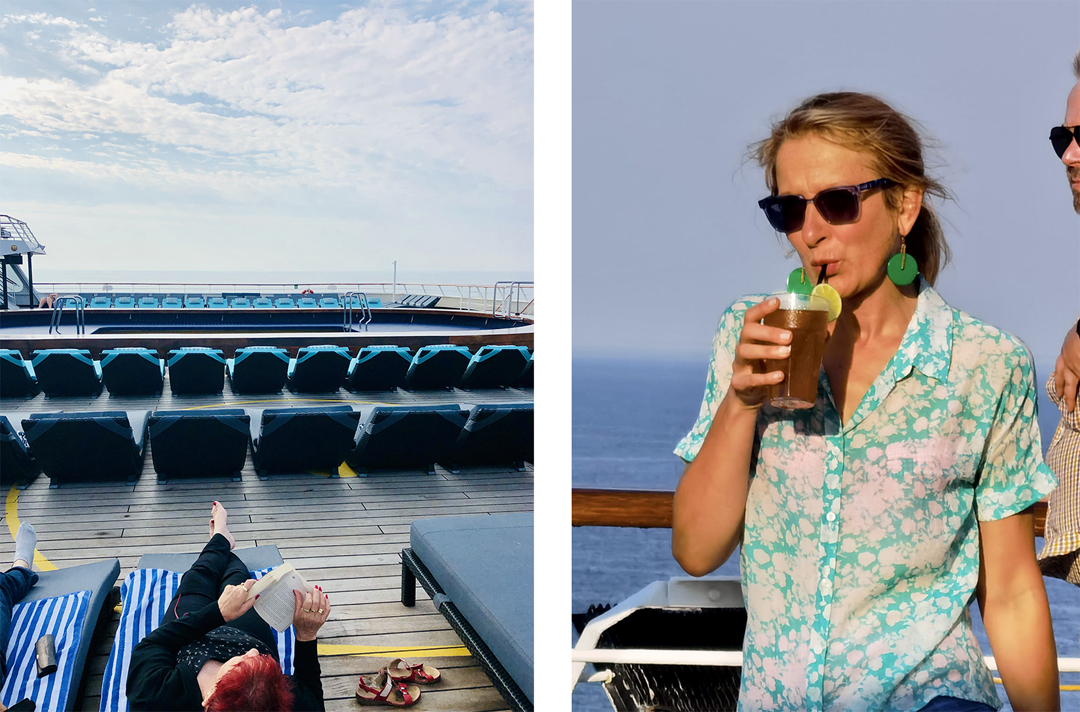
Here, passengers are “Cruisers”. The hideous war in Ukraine and Covid has kept the usual Cruisers away. The next cruise has 1000 guests booked. On board, there’s a mix of well-trodden retirees with canes, older singles and parents with teens. Mainly Germans. There’s even a dialysis nurse on board for those that need daily care. I meet a Bavarian teen in the lift, wearing Hermes. Her mother whines that she can’t find her cabin in the labyrinth of hallways. The lamentations of the wealthy.
Surprisingly there’s about as many staff. A one-to-one ratio! Such beautiful and committed people, mainly from Indonesia, India and The Philippines. Most are fluent in at least three languages and on contracts keeping them on board for up to ten months. You’d hope you like your colleagues and the sea.
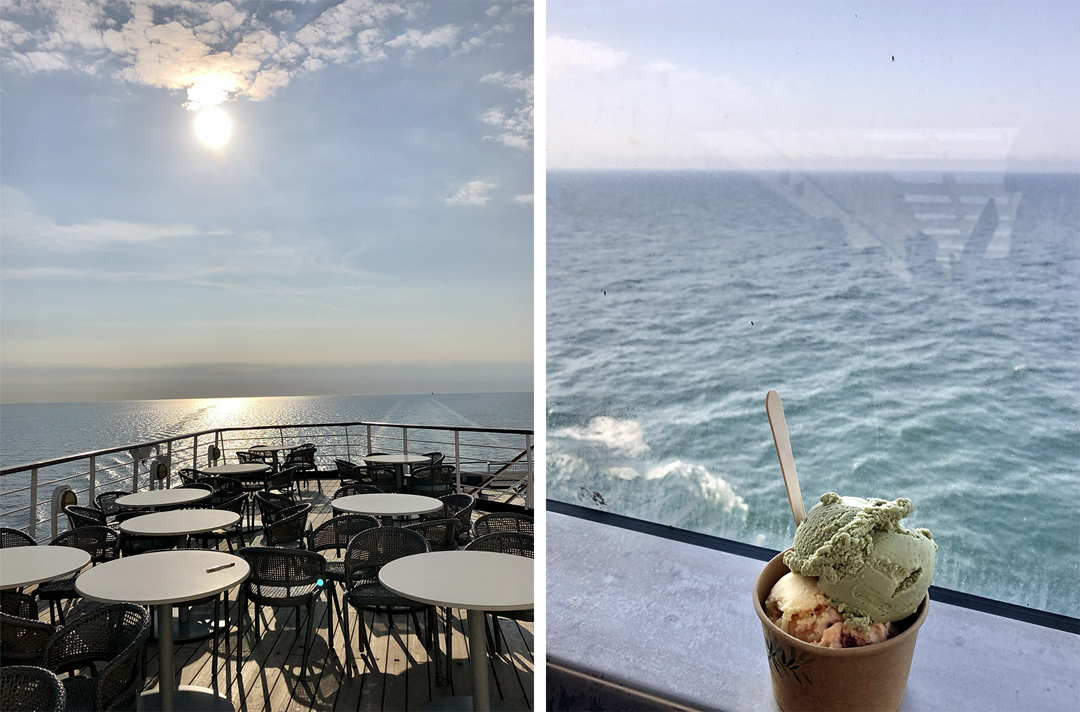
I talk with Bar Manager, Ida (from Bali) and Maître D’, Joby (from Kerala, who is fluent in five languages and has worked on cruises for around 30 years, including on trips with this ship to Australia). When my first job here is done, I look forward to discovering more about these wonderful people and why they chose this life. They work so hard for us. Serving graciously and from behind the regulatory masks.
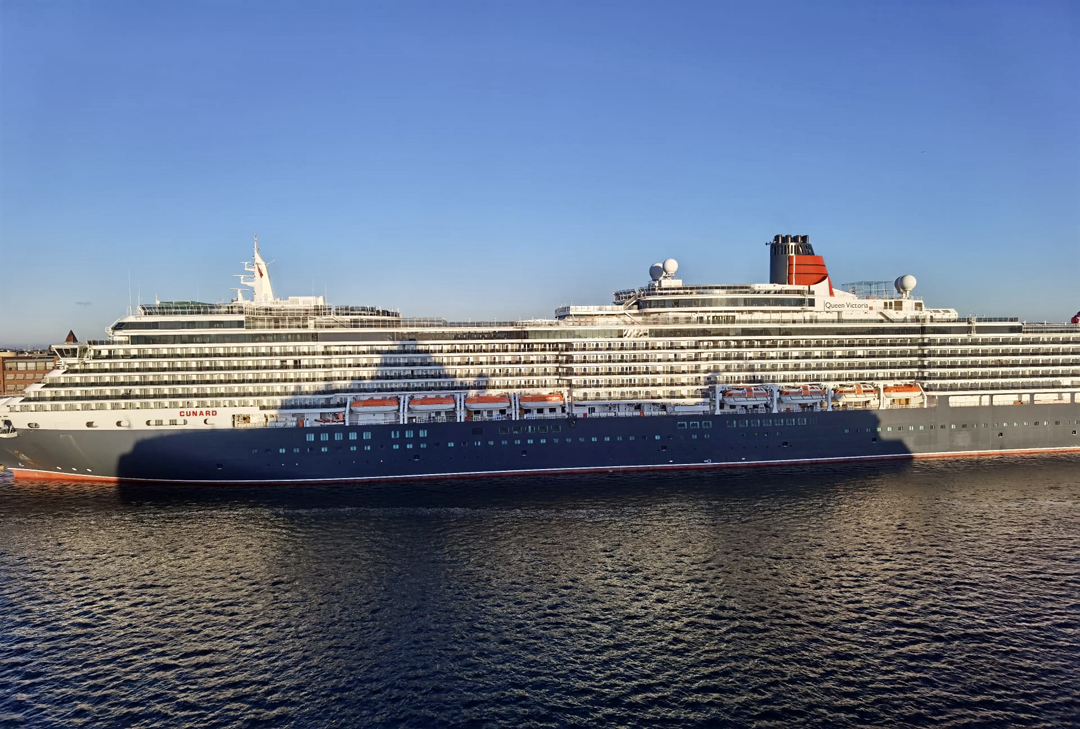
And the monolithic ship docking? That’s the Queen Victoria. Our ship looks downright tiny in comparison.
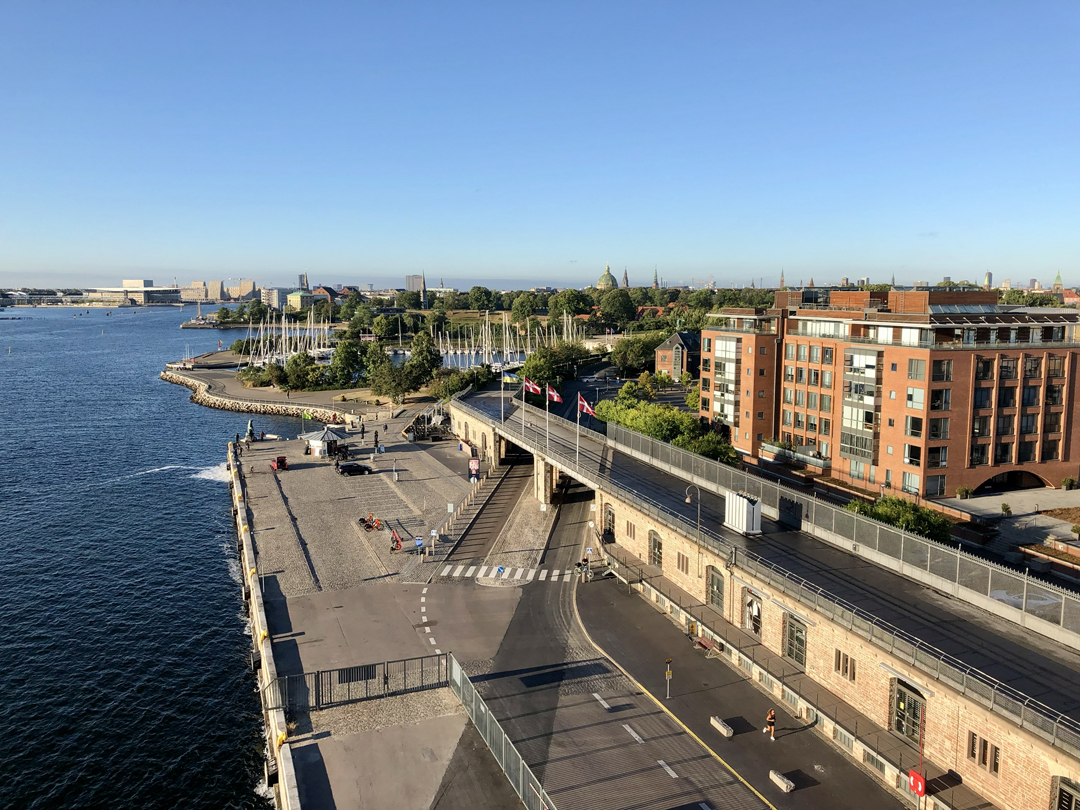
It seems the whole point of a cruise isn’t only the wining, dining, connecting, sport, leisure and gazing out at the beauty of the sea.
It’s also the brief forays on land into other cultures. Some of the Cruisers do it via bus and then trot around after a lady up front who’s carrying a sign with the name of the cruise line. I set off on foot.

In 1967, when my parents journeyed from Bremerhaven to Melbourne, international travel was a luxury. Dad had seen some exotic places with his brief work as a Marine, but this was Mum’s first. To think that they were immigrating (with only one trunk) is courageous. Their first stops were Southampton and The Canary Islands.

Here, and in no time at all, I am exploring Riga’s old town and its Art Deco splendours. I pose underneath “Mum’s Street”, meet a rich dog and some Russians outside Sotheby’s, create a shelter for a napping bat (the fur on the footpath), run after a lady with the craziest pink plaits to ask for a photo, and am reminded of Moscow’s 24-hour fur shops in one of the main drags.

I also visit an Orthodox Church, and even though I wear the required head and shoulder covering (my sarong), I still score dirty looks from one of the nuns while she swishes the floors. I get it: in their system, my bare calves are too much, and I wonder if she’d shin-kick me with her swisher if she had her way? The lady at the souvenir shop makes up for it with her smiles, which is where I buy a Super-powered Saint.
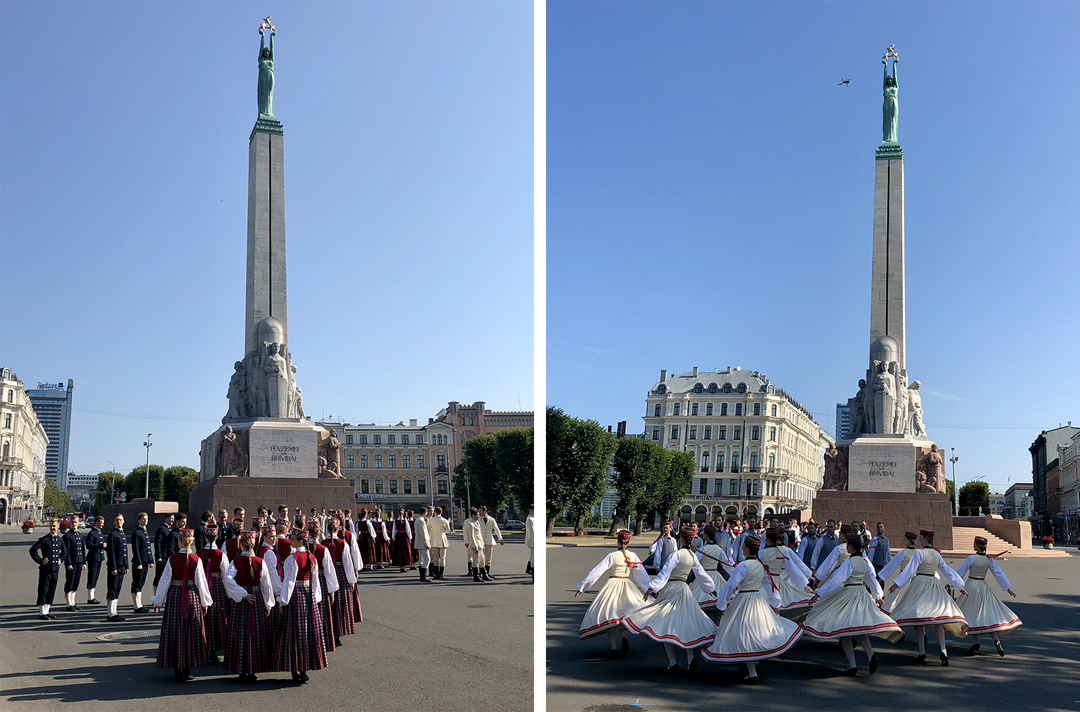
I chance upon a (one-take!) moving performance at The Freedom Monument, an important symbol of Latvian independence, and so beautiful to witness a group of dancers (not all featured) representing the different regions of Latvia.
Oh, and that’s another drone, above the dancers. And on the left, out of shot, are five cameras from film and TV crews. The reality I’m in onboard has morphed outside the ship.
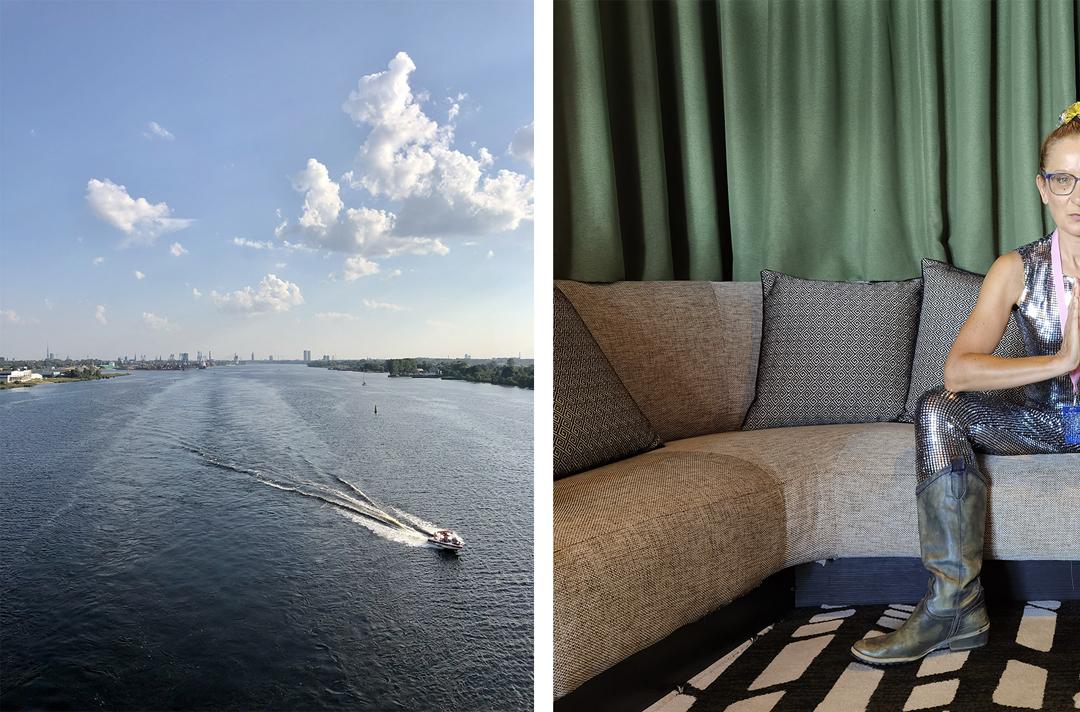
In the late 60s, my parents adventurously ‘cruised into’ a new life. They didn’t plan to immigrate from Germany. Nonetheless, the choice to stay in Australia and the life they created, is admirable. Unlike many immigrants who kept close ties to the motherland, my parents rarely returned.
My life is almost the reverse of my parents, one of ‘moving between’. I’m utterly grateful to have this dual Aussie-Deutsch identity. It’s not been a breeze, but the last decades have taught me to overcome personal hurdles and angsts and to uncover and appreciate its riches. This life of mine in and between Berlin and Melbourne is a double one. I used to struggle with the “Zerissenheit”: a beautiful German expression (to be torn between things, worlds, and ideas), which I investigated in an early Berlin project, as part of an Australia Council-supported residency at Künstlerhaus Bethanien. That exploration became the book and installation, The Book of Back.
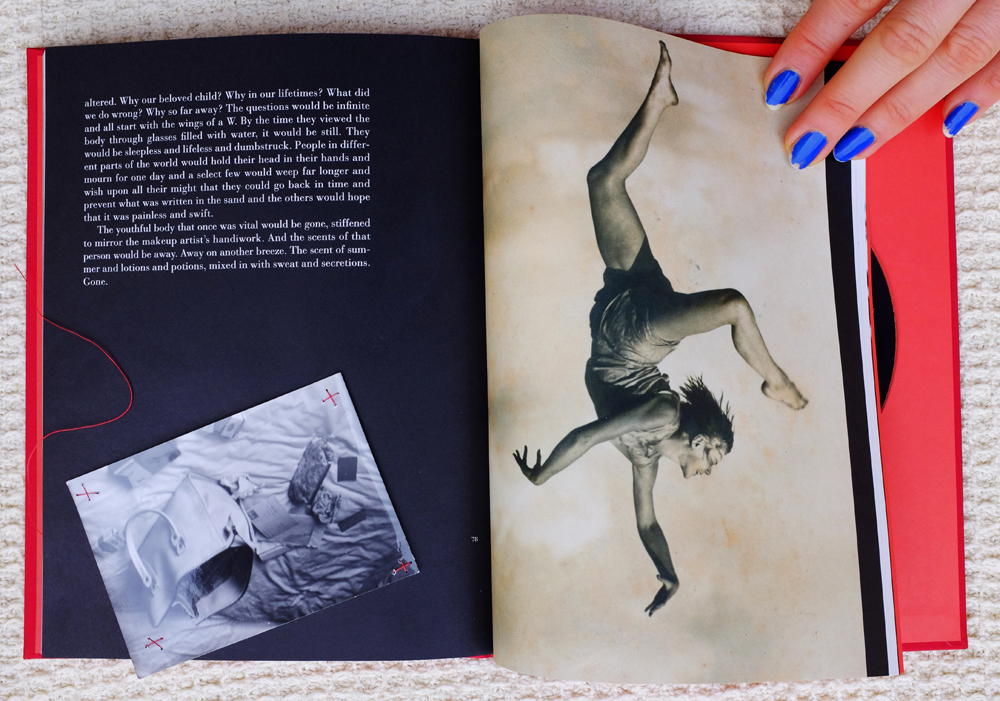
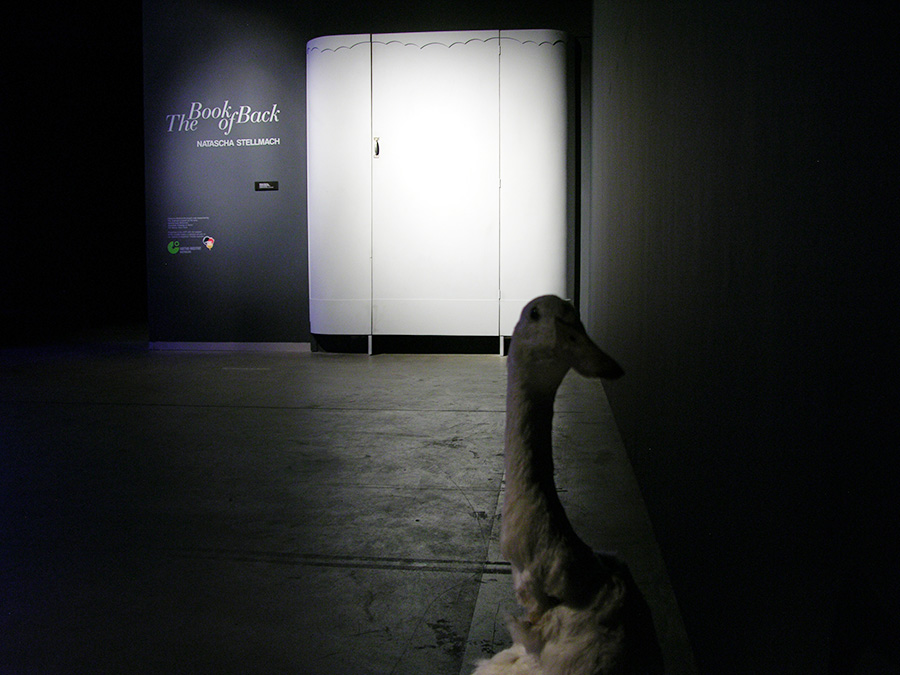
These days, the Zerissenheit has softened, overcome by the reminder that here is where I am and now is all that matters. How we ‘let go’ and why we ‘hold on’ (to ideas, relationships, or things) are conundrums that I’ve investigated in my art and coaching practice for many years. My Zerissenheit has softened over the years, aided by the incredible loved ones in my dual worlds and yoga (including meditation). Yoga is a grounding, non-negotiable practice that travels with me. It’s also my best reality pill.

Bizarrely, I’m on this cruise because I’m ‘playing’ in parallel worlds. We create our realities.
Most artists will agree that life and art are intertwined.
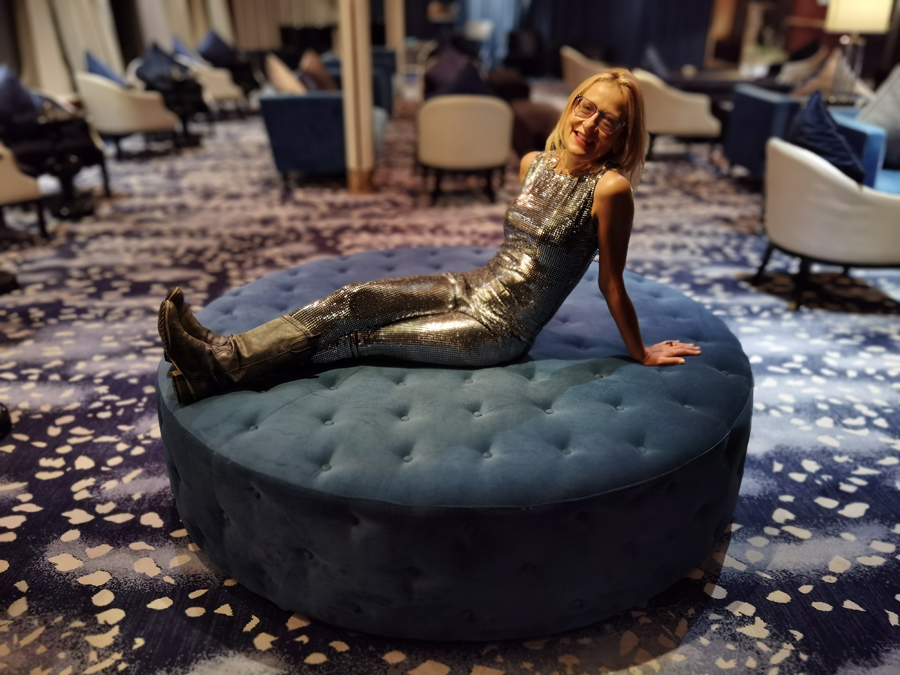
In between my antics here I observe that:
The workers, from all parts of the globe, work hard but also enjoy their job (are they simply being polite to me because I am a guest and wearing a silver sequinned mermaid catsuit?
(To, “Oh Madam, you look so wonderful today!”, I reply, “Thank you! Feel free to call me Natascha, what’s your name?”).
Wearing this guise makes me realise I ought to wear such outfits more often: it brought so many smiles and bizarrely, it brought us closer.

I also observe that most guests consider how much they drink and eat. It does help that this cruise doesn’t offer an all-you-can-eat smorgasbord and that if you want seconds, you need to order again (which I usually do – I have a healthy appetite).
Additionally, similar to most hotels these days, guests are encouraged to use towels and linen frequently to save on resources and staff time.
And, unlike my preconceptions of ‘wasteful cruisers’, this doesn’t seem to be such a vessel. However, I need to probe further and be on here longer to prove my revamped view.
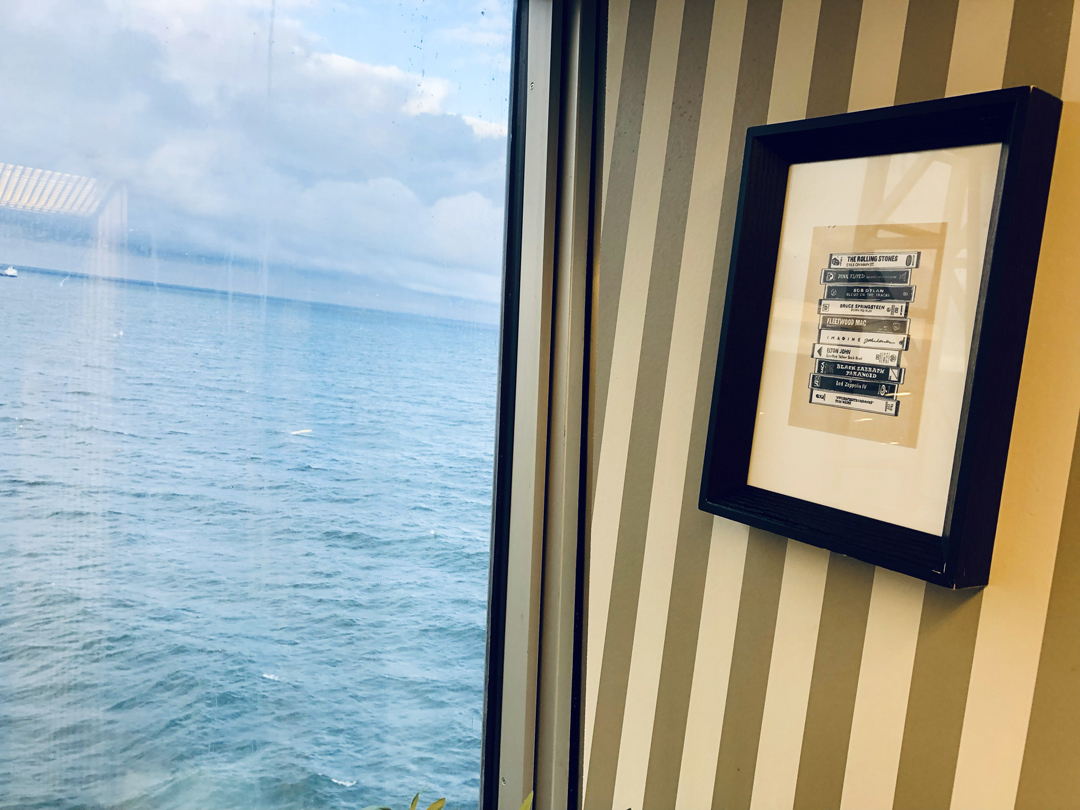
Don’t get me started on the art on board. I actually wish I curated it.
Some is dubious: the 90s watercolour repro in my cabin of a harbour like Venice.
Some is appropriate, but framed horribly: the repro vintage copperplate prints of city rivers of a bygone time.
Some is brash and big: the dog-human creature at reception.
And some is ok, like this linocut repro. However the playlist does show the predominant demographic’s age. I like it because I still love cassettes and could probably sing along to most of the hits on these tapes, but the work is missing a Mixed Tape.
Vessels like this would benefit from art commissioned from artists who live and work along the routes, like the street art I photographed in Riga (the couple under the fur, featured above). That would be aesthetic, relevant, supportive and great for positive spin, becoming a win-win for guests, the cruise company and artists. Someone, please employ me.

I’ve always had a bit of a problem (?understatement) with photographing myself and seeing photos of me, especially if they’re “unflattering”. It’s not uncommon to be so daft, whatever your state of self-awareness/feminism/age. Lots of us share the bizarre (but human) internalised message that we’re not “good enough” for a kind of norm (societal, parental, personal). Back when I studied photography and started exploring this conundrum, we called these pictures self-portraits, and art history is full of them across all media, dating back to ancient Egypt.
VOYAGE, with its focus on identity, also engages with my dislike of still and video Selfies. Not surprisingly, I enjoy seeing those of others – the voyeur in me – but usually can’t stand mine. And like all of my projects, which have chosen me, this one said, “Hey Tasch, you’re old enough. This is one shit-kicker phobia that you now have to lose.” Or something to that effect. And not surprisingly, “Selfiephobia” is a thing. So the project also invites more ease around Selfies – and perhaps even messes with my notion of what that means. So that’s why I’m sharing them, folks. Not because I’ve unleashed my narcissist (wow – what would she look like?).
Simultaneously, we’re in a time of Selfie overkill, but as someone who didn’t grow up with a smartphone attached to my face and an artist who was always behind the lens and directing others, this is both challenging and refreshing – and let’s see what it does with my performance practice?

Plot Twist. Something just occurred that none of us foresaw.
Depressing news: the angst around that “crown” has, yet again, impacted artistic production. Our incredible voyage cuts short because a team member contracts Covid. Despite negative PCR tests (the team has a Covid Crew and professional station), we have to disembark at the next harbour. Although our “creative mission” is complete, as a reward for our work, meticulous advance arrangements had been made for 10 of us to stay onboard and complete the entire sea voyage. In my case, for my project VOYAGE.

The decision to disembark makes no financial, environmental, or medical sense (other than potential litigation, which is the sad reason for many stupid social and political decisions) – I won’t get started there.
I’m feeling an odd ‘Melancholy Seaness”’ It’s Wehmut. The Germans describe sadness, disappointment, and pain rather well and accurately.
Added to this, my dear friend Anne died this morning in Melbourne. A devastating blow. This news makes the tyranny of distance even more palpable. Life has a way of humbling us.
Ich fühle mich gerade extrem wehmütig.
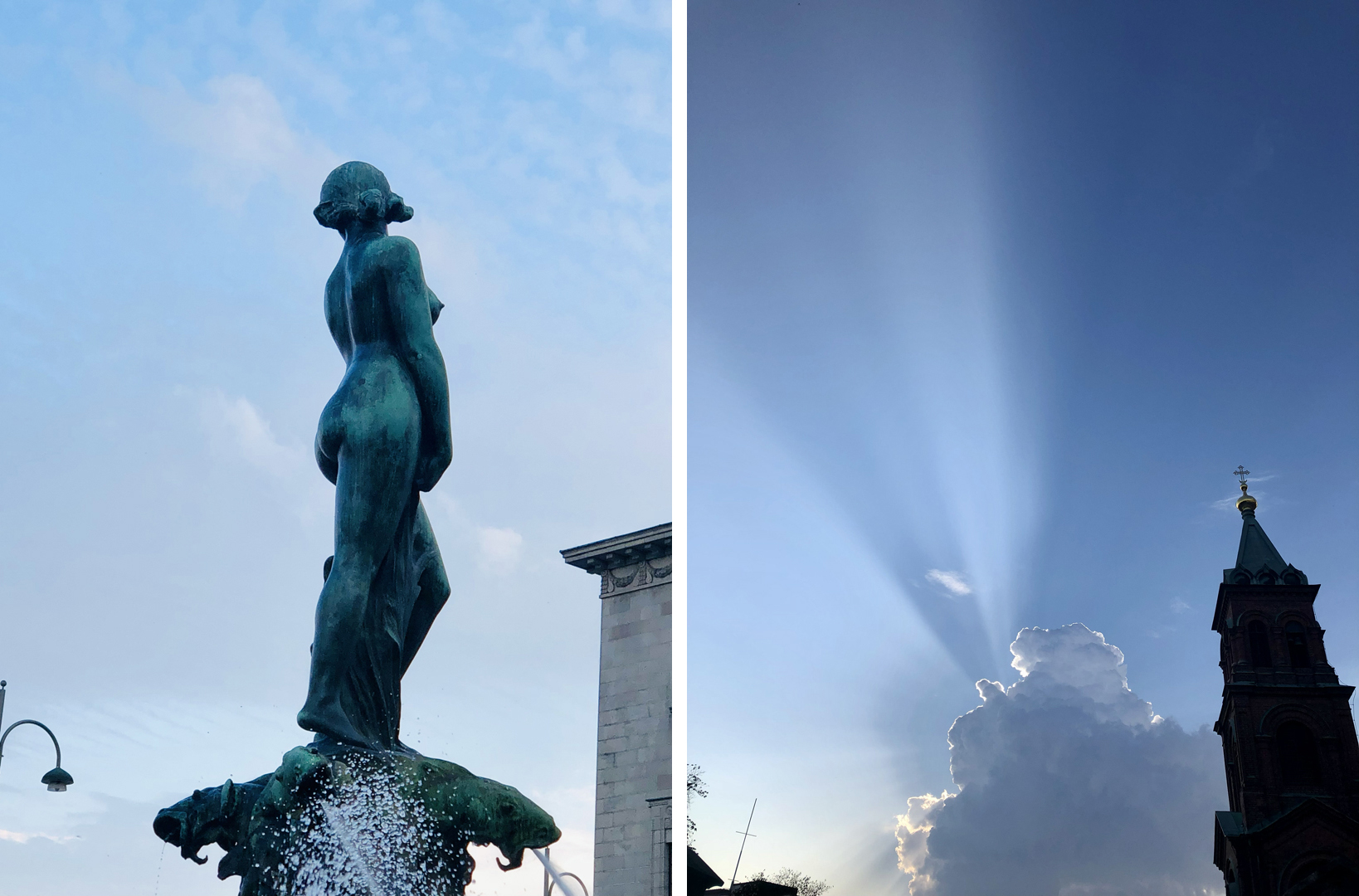
In a way, this thwarted voyage and additional grief make it easier to relate to the immigrants and refugees whose voyages are hindered. It must be an incomprehensible Melancholy Seaness to be unable to complete or make your voyage to a new life. Devastating. It makes the tyranny of distance even more palpable. Life has a way of keeping us real.

So our voyage is unexpectedly finished in Finland.
As I farewell one of the elderly actors, a tall, charming man who, like my father, also grew up in former East Germany and fled to Cologne, he says, “Grüß Berlin! Spuck in die Spree von mir.”
And I will spit in the Spree for him. I’m gonna spit for all of us.
Helsinki takes the edge off the Melancholy Seaness, but I walk around dazed with sea legs and notice all the other (larger) cruise ships docking and wish I could stow away on one of them. I’m also still hearing our Captain as part of his animated morning, “welcome to the day spiel”, “… und leider verabschieden wir uns heute von unser Hollywood Film Team…”

Even our Finnish (!) bus drivers are surreal characters. The first tells us excitedly about Grandmother’s Tunnel and then warns us not to go (a kind of Hotel California whore house?). The second, a late-night bus shuttle from the city to the hotel, performs and asks (out of the blue) whether we have any connections to Hollywood. Before we answer, he turns on his mic and hams it up in a black, dry way for the three of us. His monologue includes a plea to make it in the movies and his desperation to go to America. (Oh, our age-old tussle of wanting to be elsewhere than where we are). I suggest he’ll have more luck with acting school and getting to know the Kaurismäki’s or their protégées. I don’t say that Hollywood is overrated or that his American accent needs coaching.
I do thank him! He made me laugh, and yet again, life and art intertwined.

I’m still disappointed that this particular voyage was cut short, but also grateful for the brief opportunity to partly investigate my project, including an introduction to the similarities and differences to my parent’s sea-crossing in 1967.
The regulations around Corona previously prevented my initial voyage this year, where I would trace my parent’s route from Bremerhaven to Melbourne via cargo ship. Then a ‘gift from the seas’ appeared in my inbox: to work on this ‘parallel universe’ film project, with the added incentive to stay onboard after the shoot for an additional week. It seemed too good to be true, an ideal pilot for VOYAGE, as it was a cruise ship that mirrored my parent’s one in size, manner and relevance.
Although VOYAGE was yet again, thwarted by Corona, this ‘Part 1’ was an incredible experimentation playground for the future voyage. And like most artists, I will not be defeated!
In the spirit of the late, great Christoph Schlingensief, “Scheitern als Chance” is the motto to spur me on.
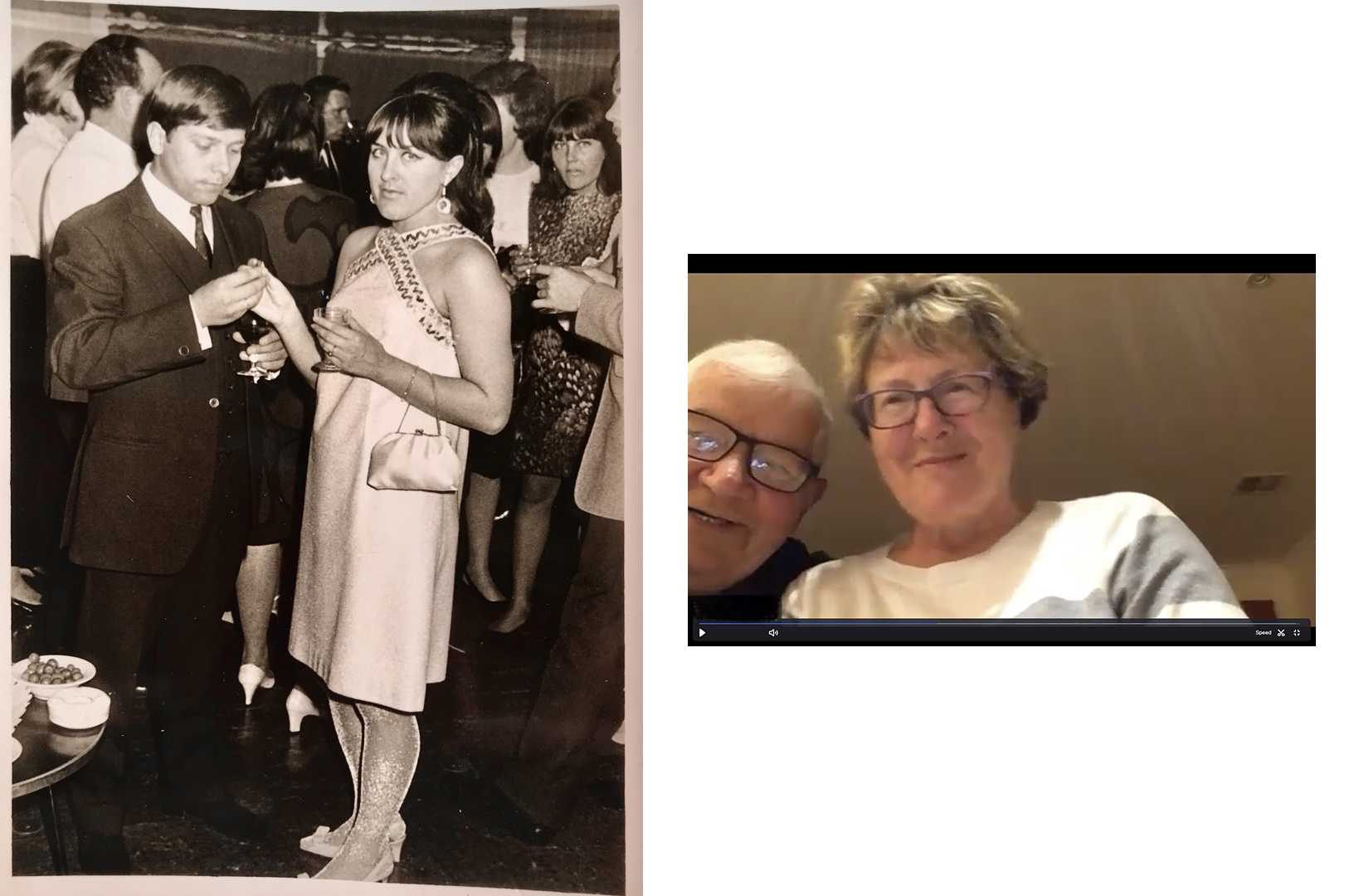
Heartfelt thanks to my dear parents, this is for you!
Pictured then, by the Queen Frederica’s on-board photographer in 1967 and in 2022 (via zoom, for many interviews).
ADDITIONAL PHOTO CREDITS:
Nine photos above thnx to Joachim @photoplatz
From the top, Numbers:13, 31 (Portraits of me), 34 (Queen Victoria), 39, 45, 48, 49, 60, 63 (me).
Natascha Stellmach’s project is supported by a juried grant from Stiftung Kunstfonds (German Arts Council).

